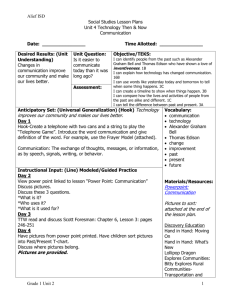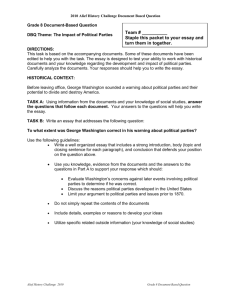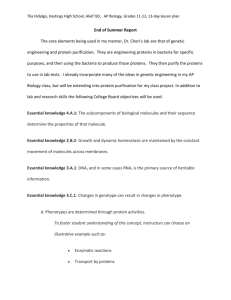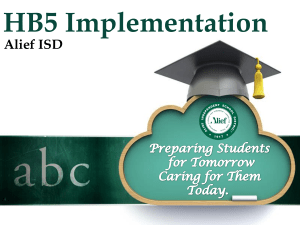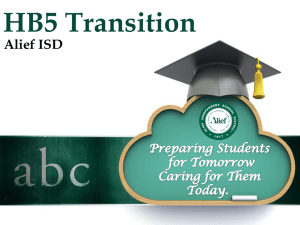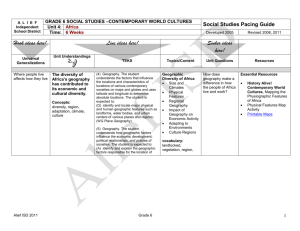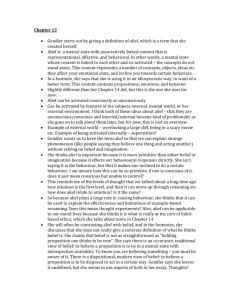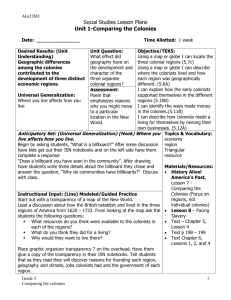docx
advertisement
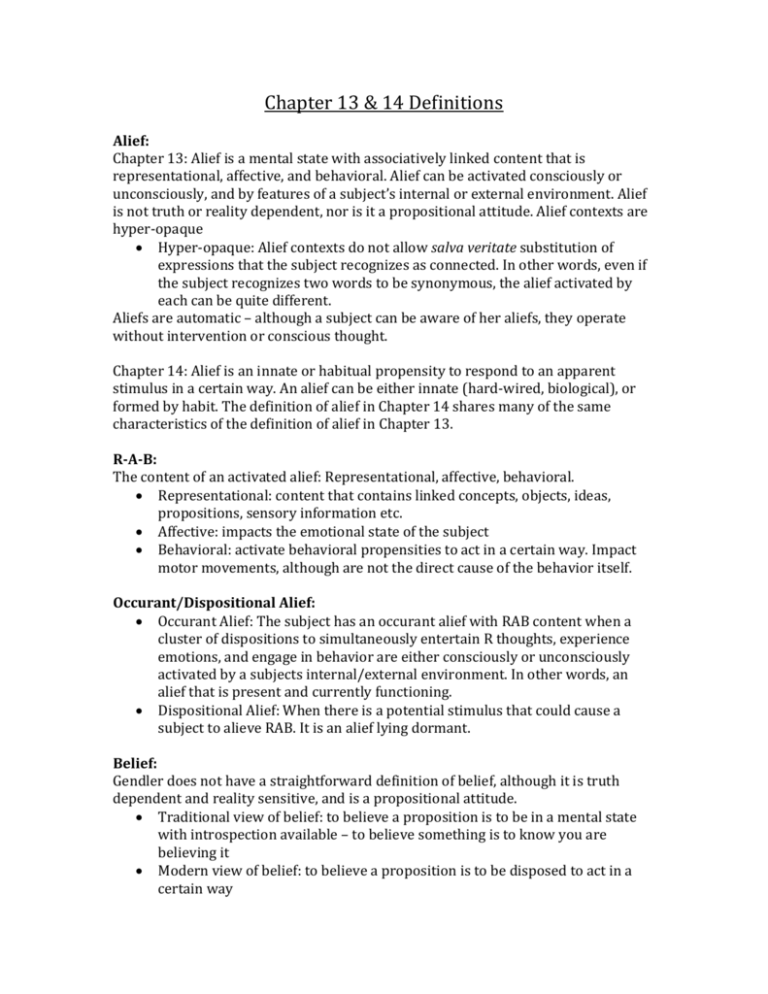
Chapter 13 & 14 Definitions Alief: Chapter 13: Alief is a mental state with associatively linked content that is representational, affective, and behavioral. Alief can be activated consciously or unconsciously, and by features of a subject’s internal or external environment. Alief is not truth or reality dependent, nor is it a propositional attitude. Alief contexts are hyper-opaque Hyper-opaque: Alief contexts do not allow salva veritate substitution of expressions that the subject recognizes as connected. In other words, even if the subject recognizes two words to be synonymous, the alief activated by each can be quite different. Aliefs are automatic – although a subject can be aware of her aliefs, they operate without intervention or conscious thought. Chapter 14: Alief is an innate or habitual propensity to respond to an apparent stimulus in a certain way. An alief can be either innate (hard-wired, biological), or formed by habit. The definition of alief in Chapter 14 shares many of the same characteristics of the definition of alief in Chapter 13. R-A-B: The content of an activated alief: Representational, affective, behavioral. Representational: content that contains linked concepts, objects, ideas, propositions, sensory information etc. Affective: impacts the emotional state of the subject Behavioral: activate behavioral propensities to act in a certain way. Impact motor movements, although are not the direct cause of the behavior itself. Occurant/Dispositional Alief: Occurant Alief: The subject has an occurant alief with RAB content when a cluster of dispositions to simultaneously entertain R thoughts, experience emotions, and engage in behavior are either consciously or unconsciously activated by a subjects internal/external environment. In other words, an alief that is present and currently functioning. Dispositional Alief: When there is a potential stimulus that could cause a subject to alieve RAB. It is an alief lying dormant. Belief: Gendler does not have a straightforward definition of belief, although it is truth dependent and reality sensitive, and is a propositional attitude. Traditional view of belief: to believe a proposition is to be in a mental state with introspection available – to believe something is to know you are believing it Modern view of belief: to believe a proposition is to be disposed to act in a certain way Gendler seems to hold a combination of the views of belief. Imagination: It is not truth-dependent or reality sensitive. It is a propositional attitude. It is governed by a norm of quarantine: what happens in imagination stays in imagination. Voluntary Pretense: imagination governed by the will, “make-believe”. Involuntary Imagining: imagination that is ungoverned by the will, may affect us in situations other than simply the imagined world. Belief Discordant Alief: An alief that does not match with the subject’s conscious and rational belief. This causes a belief-behavior mismatch: Belief-behavior mismatch: when a subject behaves in a different way than she consciously asserts that she believes. Also called belief-discordant behavior. Belief Concordant Alief: An alief that “matches up” with a subject’s conscious and rational belief. Norm Discordant Alief: When a subject’s environment is different than it “should” be, or a subject is not paying attention to it, her occurant aliefs will be discordant. These aliefs predispose humans to behave in ways that violate their intention to regulate their behavior according to some norm they have consciously decided upon. These aliefs predispose humans to have norm-discordant behaviors. Norm Concordant Alief: When a subject’s environment is stable, typical, and desirable, and the subject is attentive to these features, her occurant aliefs will largely match up with these occurant reality-reflective attitudes. (These attitudes are belief in humans, and teleofunctional attitudes in animals). In this sense, aliefs are adaptations for our environment.


